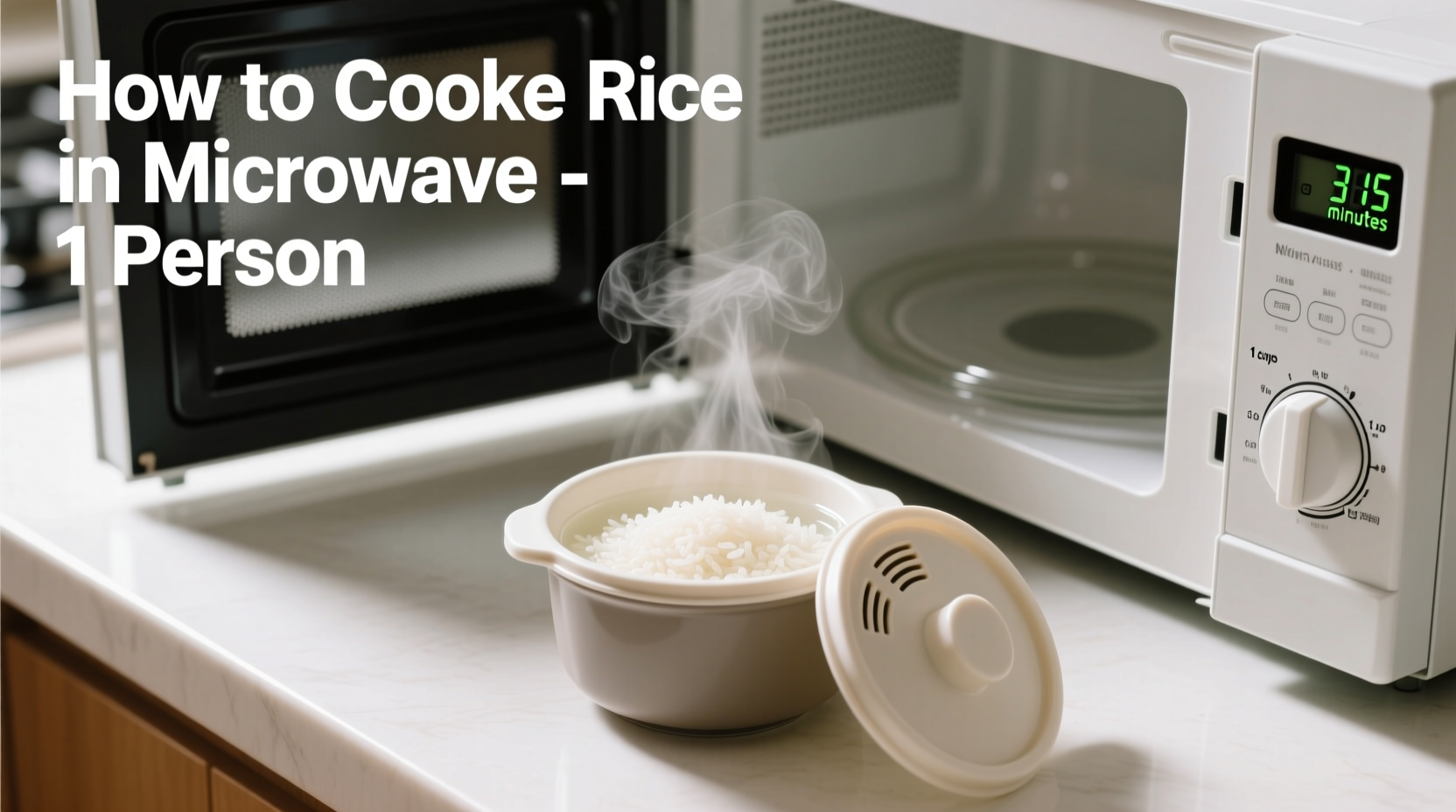Craving fluffy rice but cooking for just yourself? You're not alone. Over 38 million Americans live alone, and microwave rice solves the "too much leftovers" dilemma. This guide delivers the exact measurements and timing needed for restaurant-quality rice without wasting food or energy. Forget complicated stovetop methods—this single-serve technique takes just 15 minutes with one bowl and zero guesswork.
Why Microwave Rice Works Best for Solo Cooks
Traditional rice cooking methods waste resources when preparing for one person. A microwave uses 75% less energy than stovetop cooking according to U.S. Department of Energy research. Plus, you avoid the "too much water" problem common with small stovetop batches. The contained environment prevents uneven cooking—critical when you've only got one chance to get it right.
What You Actually Need
Forget complicated equipment. For perfect single-serve rice, gather just:
- Microwave-safe bowl with lid (or microwave-safe plate)
- Measuring cup and spoon
- 1/3 cup (65g) raw white rice (basmati, jasmine, or long-grain)
- 1/2 cup (120ml) cold water
- Pinch of salt (optional)
The Foolproof Cooking Process
Follow these precise steps for consistent results:
Step 1: Proper Rice-to-Water Ratio
This critical ratio differs from standard cooking instructions. For single servings:
| Rice Type | Rice Amount | Water Amount | Microwave Time |
|---|---|---|---|
| White rice | 1/3 cup (65g) | 1/2 cup (120ml) | 8-10 minutes |
| Brown rice | 1/4 cup (50g) | 1/2 cup (120ml) | 12-14 minutes |
| Instant rice | 1/3 cup (65g) | 1/3 cup (80ml) | 4-5 minutes |
Step 2: Microwave Cooking Sequence
- Rinse rice under cold water until water runs clear (removes excess starch)
- Combine rice, water, and salt in microwave-safe bowl
- Cover loosely with lid or microwave-safe plate
- Microwave on HIGH for 8-10 minutes (white rice) or 12-14 minutes (brown)
- DO NOT OPEN during cooking—steam is crucial for texture
- Let rest covered for 5 minutes after timer ends
- Fluff gently with fork before serving

Troubleshooting Common Issues
Even with precise measurements, microwave variables can cause problems. Here's how to fix them:
Rice Too Wet or Soupy
This happens when microwave power exceeds 1000 watts or water ratio is off. Solution: Next time, reduce water by 1 tablespoon (15ml) and extend resting time to 7 minutes. The USDA Food Safety and Inspection Service confirms proper resting allows residual heat to absorb excess moisture.
Rice Too Dry or Hard
Add 1-2 tablespoons water, cover, and microwave in 30-second increments. Never add water during initial cooking—that disrupts the steam environment. Professional chefs at the Culinary Institute of America recommend this correction method for single-serve portions.
Overflow Prevention Tip
Place bowl on microwave-safe plate to catch spills. For brown rice, add 1 teaspoon lemon juice to water—this reduces foaming without affecting flavor.
Flavor Boosters for Solo Meals
Elevate basic rice with these single-serve enhancements:
- Add 1/4 teaspoon garlic powder before cooking
- Stir in 1 teaspoon sesame oil after cooking
- Mix with 2 tablespoons frozen peas during last minute
- Top with soft-boiled egg for complete meal
When Not to Use Microwave Method
Microwave cooking works perfectly for most white and brown rices, but avoid this method for:
- Sticky rice varieties (requires steaming)
- Recipes needing precise texture control (risotto, paella)
- When using very old microwave (< 700 watts)
The American Association of Cereal Chemists notes that microwave absorption varies significantly with rice age and storage conditions—fresh rice yields best results.
Storing and Reheating Leftovers
Even single servings sometimes yield extras. Store properly for best results:
- Cool completely within 1 hour
- Store in airtight container for up to 4 days
- Reheat with 1 teaspoon water per 1/2 cup rice
- Microwave 60-90 seconds on 50% power
FoodSafety.gov confirms proper storage prevents bacterial growth in cooked rice.











 浙公网安备
33010002000092号
浙公网安备
33010002000092号 浙B2-20120091-4
浙B2-20120091-4